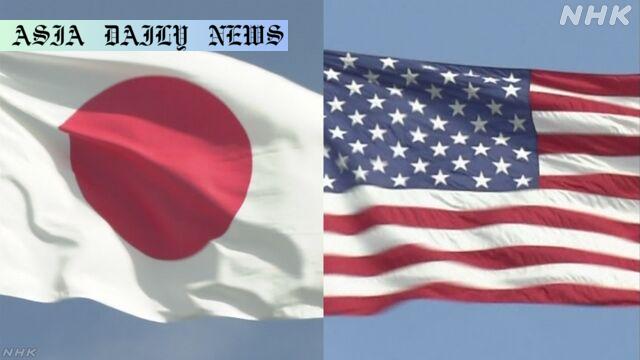Tariff Talks: Japan must offer significant concessions like LNG, agricultural products, and vehicles under US economic pressure.
Trade negotiations between Japan and the US are intense with economic coercion claims.
Japan may offer concessions like LNG, agriculture, and vehicles to reduce tension.
Australia is subject to US tariffs but has taken a cautious approach.

The Context of the US-Japan Tariff Talks
Trade relations between Japan and the United States have always been dynamic, defined by mutual economic interests and periodic tensions. Currently, these ties face challenges with Washington pressing Tokyo to make substantial concessions in tariff discussions. The objective, as reported, is to address the significant trade imbalance between the two nations—a deficit that has long been a point of contention for the United States. These discussions, held in Washington, reflect both the urgency and complexity of the economic diplomacy unfolding between these global economic powerhouses.
According to reports, Japan is under pressure to provide what some are calling “a whole lot of carrots” to avoid punitive economic actions from the US. Potential concessions might involve increased purchases of US liquefied natural gas (LNG), agricultural goods, and vehicles. For Japan, these demands might feel like economic coercion, as suggested by Kurt Tong, a managing partner at The Asia Group. With President Donald Trump prioritizing the reduction of trade deficits, the United States appears resolute in its approach, further amplifying pressure on its Asian ally.
The Broader Implications for Japan
These negotiations could carry significant implications for Japan’s economic landscape. Increased imports of US goods—particularly in areas like agriculture and energy—might influence domestic industries that have traditionally been protected by tariffs and subsidies. Japan’s willingness to proceed with concessions could also set precedents, impacting its trade negotiations with other countries.
Moreover, the US leveraging its economic might in this manner highlights the growing use of trade policies as geopolitical tools. While Japan has faced similar challenges before, the current global economic landscape—shaped by shifting alliances and competition—adds layers of complexity to these discussions. The outcome will undoubtedly resonate across Asia, influencing regional trade dynamics and policies.
Australia’s Position in Context
Interestingly, Australia, which is also subject to US tariffs, has adopted a different approach. Despite being subjected to a baseline 10-percent tariff imposed from April 5th, the Australian government appears less concerned about entering immediate negotiations. This cautious stance contrasts sharply with Japan’s proactive engagement, highlighting differing priorities and strategies among US trade partners.
Australia’s case is further bolstered by its trade surplus with the United States, offering a cushion of stability that Japan might not currently enjoy. This disparity points to the varying economic dependencies and leverage different nations have in negotiations with the US. It also underscores broader global complexities and inequalities in responding to American diplomatic and economic pressures.
The Larger Picture of US Trade Policies
The Trump administration’s broader trade policies have had ripple effects across the globe. The imposition of tariffs and demands for favorable trade terms reflect the administration’s commitment to reducing trade deficits and bolstering domestic industries. However, critics argue that such policies often verge on coercion, pressuring nations into economically untenable positions.
For Japan, the challenge lies in balancing its trade relationship with the United States against its own domestic priorities and regional obligations. These negotiations are a microcosm of the broader challenges faced by nations in navigating a shifting global economic order. As such, their outcome could offer valuable lessons and precedents for future diplomacy in the region.
Commentary
The Stakeholders in the Tariff Talks
The ongoing tariff talks between Japan and the United States shed light on the complex dynamics of international trade negotiations. Both nations have much at stake, and the pressure on Japan to significantly concede is palpable. With the U.S. leveraging economic policies to advance its interests, the imbalance of power in this relationship cannot be ignored. Japan, for its part, must carefully gauge its options, knowing that any misstep could have far-reaching repercussions for its economy and trade relations.
Economic Coercion Versus Diplomacy
Kurt Tong’s comments about these negotiations feeling like “economic coercion” are both apt and concerning. While diplomacy is often a game of give-and-take, the power differential here adds a moral element to these talks. How much should a country like Japan compromise to maintain a stable relationship with its largest security partner? Furthermore, the demands for Japan to increase purchases in LNG, agriculture, and vehicles appear tailored not just to correct trade imbalances but also to bolster President Trump’s domestic priorities.
The Regional Perspective
This issue also highlights the larger challenges faced by countries in Asia navigating their relationships with global powers. If Japan accedes to these demands, it might set a precedent encouraging similar tactics with other nations. Furthermore, the U.S.’s posture in these talks resonates across the Asia-Pacific, influencing regional economic diplomacy. Beyond bilateral relations, these negotiations are part of a broader narrative of shifting alliances and economic strategies on the world stage.
Ultimately, while compromise might be inevitable for Japan, the focus should remain on ensuring that any agreements reached are sustainable and mutually beneficial. Only through a balanced approach can these talks serve as a stepping stone for healthier economic ties in the future.


